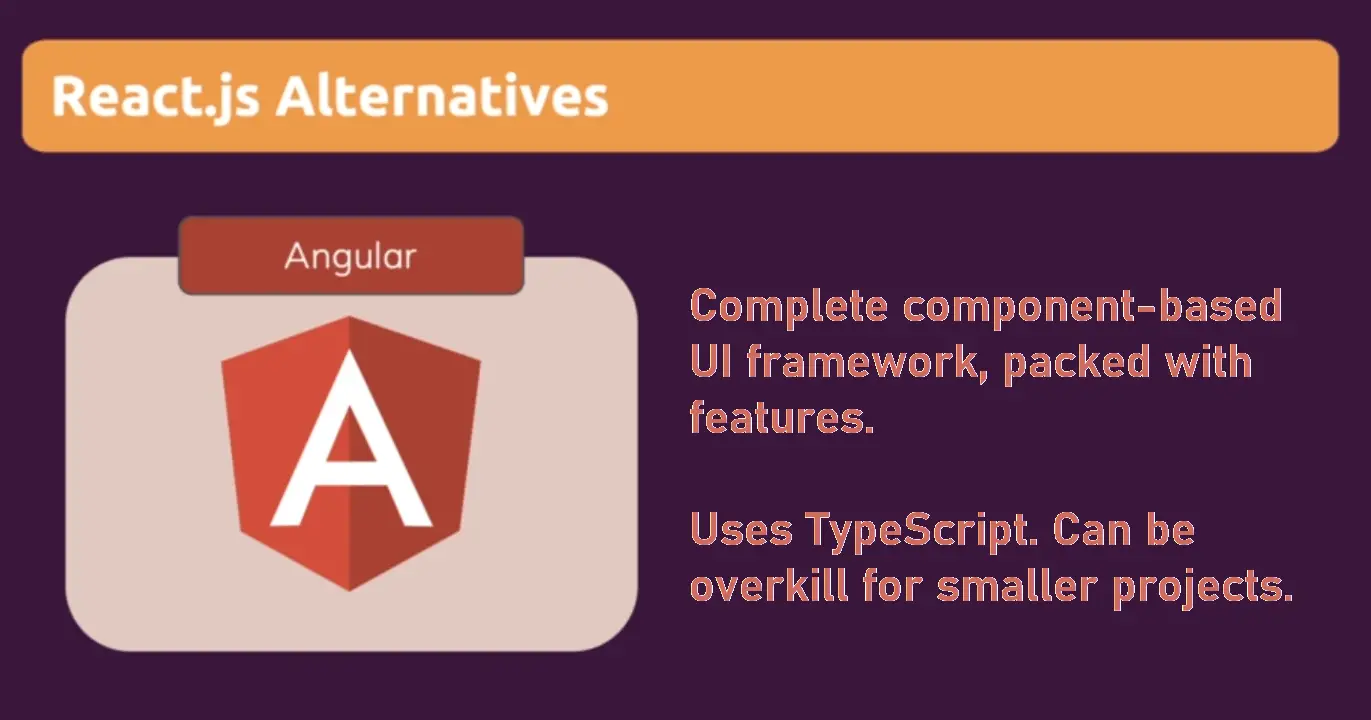Back to: ReactJS Tutorials
ReactJS vs AngularJS vs VueJS:
In this article, I am going to discuss ReactJS vs AngularJS vs VueJS. Please read our previous article where we discussed How to Build Single Page Applications (SPAs) with ReactJS.
ReactJS vs AngularJS and VueJS:
ReactJS is not the only solution available for building WEB Applications. There are several ReactJS alternatives available in the market that provide similar features and functionality, along with their own unique advantages and drawbacks. In this article, we will explore some of the popular alternatives to ReactJS such as Angular and Vue. Now we are going to focus on ReactJS as it is one of the most popular front-end frameworks or libraries used in the industry nowadays.
ReactJS:

It is a lean and component-based UI library. It focuses on the component thing, and it does not have a lot of other features built in. If you need features like routing, you need to install an extra third-party library. And that will sometimes be the case when working with React, where you need to install third-party libraries to add certain pieces of functionality to your application.
ReactJS focuses on components, which we are going to learn in our upcoming articles. What exactly they are and how we create them, and how it then renders these components. That is the focus of ReactJS and extra functionality which you might need for your React app, therefore, sometimes has to be added with help of some third-party package.
Now, an alternative to React, which has more built-in features would be Angular, another very important and very popular front-end framework.
1. Angular:

Angular is a complete component-based UI framework. So, it also focuses on components just like React, but it ships with more built-in features than ReactJS. It also embraces TypeScript. And it can be overkill for smaller projects, therefore, since it has way more features built in. But for a large project, on the other hand, you do not need to rely on the community as much because there is more built into that framework. So, that is simply a little consideration you have to make.
Angular is a powerful and comprehensive JavaScript framework for building web applications. It has a steep learning curve compared to ReactJS and VueJS, but it offers more features and flexibility. Angular is a great choice for large and complex projects that require advanced features such as dependency injection, form handling, and routing.
One of the key advantages of Angular is its two-way data binding feature, which makes it easy to update the view when the model changes, and vice versa. It also has a strong focus on performance and security, which makes it a great choice for enterprise-level applications.
The syntax also looks a bit different because it is component focused, and building these components works a bit differently with Angular than it does with React. And we have also another very popular framework, another popular alternative, and that would be Vue.js.
2. Vue JS:

Vue JS is kind of like the mixture of Angular and React, in between those two extremes. It is also a complete component-based UI framework. And it also includes a lot of features, but a bit fewer features than Angular, but more than ReactJS. It includes core features like routing, and therefore with Vue, you also have to rely less on the community and still, you don’t have as much overload possibly as you might have with Angular, depending on what you build.
Vue JS is a progressive JavaScript framework for building user interfaces. It is easy to learn and use and has a smaller learning curve compared to ReactJS. Vue JS is also known for its simplicity and flexibility, which makes it a great choice for building small to medium-sized projects.
One of the key advantages of Vue JS is its performance. Vue JS uses a virtual DOM similar to React JS, which makes it fast and efficient. It also has a rich ecosystem of plugins and tools, which makes development faster and easier.
3. Svelte:
Svelte is a new and emerging JavaScript framework for building user interfaces. It is known for its simplicity and performance and has a smaller bundle size compared to React JS and Vue JS. Svelte achieves this by compiling the code during build time, which results in a faster and smaller application.
One of the key advantages of Svelte is its simplicity. It has a small API surface and a clean syntax, which makes it easy to learn and use. It also has a great developer experience with features such as hot reloading and built-in CSS handling.
4. Ember JS:
Ember JS is a powerful JavaScript framework for building web applications. It has a strong focus on convention over configuration, which makes it easy to write and maintain code. Ember JS is a great choice for large and complex projects that require a high degree of structure and organization.
One of the key advantages of Ember JS is its convention over the configuration approach. It comes with a set of defaults and best practices that guide developers to build scalable and maintainable applications. It also has a rich ecosystem of add-ons and tools, which makes development faster and easier.
Note: React currently is the most popular front-end framework but all three are great.
In the next article, I am going to discuss ReactJS Development Environment Setup for developing React Applications. Here, in this article. I try to explain ReactJS vs AngularJS vs VueJS. I hope you enjoy this ReactJS vs AngularJS vs VueJS article.
